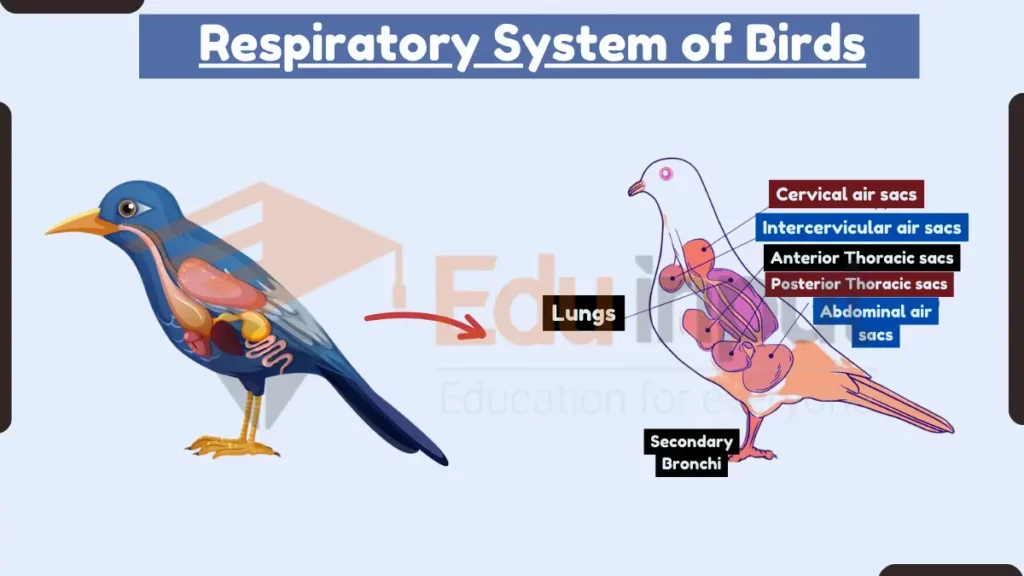Respiratory System of Birds – Organs, Adaptations, and Operating Mechanism
The respiratory system of birds is uniquely adapted for efficient gas exchange and thermoregulation (maintaining body temperature). Unlike mammals, birds have a complex system of air sacs and parabronchi that improve respiration.
Air flows in one direction through the respiratory system, allowing for continuous oxygen supply during flight. These specializations make the avian respiratory system extremely efficient.

Respiratory Organs of Birds
Her are a few organs that are involved in respiratory system of birds:
Air Sacs
Air sacs are thin-walled pouches connected to the lungs of birds. They do not directly participate in gas exchange, but store air and keep air flowing through the lungs. Air flows continuously through the respiratory system rather than in and out like in mammals. This allows for unidirectional flow and cross-current gas exchange.
Parabronchi
Within the avian lung are tiny parallel passages called parabronchi where gas exchange occurs. The walls of the parabronchi are permeable and surround a network of blood capillaries. This provides an extremely high surface area for oxygen and carbon dioxide to diffuse between air and blood.
Unidirectional Flow of Air
Air flows in only one direction through the respiratory system of birds. Air is drawn in through the trachea during inhalation and passes through the parabronchi for gas exchange. During exhalation, fresh air moves into the posterior air sacs while deoxygenated air exits anteriorly. This continuous one-way loop allows for efficient oxygen absorption.
Adaptations for Flight
Birds have a lightweight, highly efficient respiratory system adapted for their high metabolic needs during flight.
The lungs are small and rigid with large surface area. Airways are streamlined for minimal resistance.
Air sacs keep air flowing continuously while parabronchi enable rapid gas diffusion.
Unidirectional airflow eliminates pauses between breaths. These specializations support sustained oxygen supply during flight.
How Respiratory System Of Birds Work?
Here is the pathway of the respiratory system in birds in bullet points:
Inhalation
- The syrinx (voice box) opens, allowing air to flow into the trachea.
- The trachea divides into two bronchi, which enter each lung.
- The bronchi branch into smaller and smaller passages called bronchioles.
- The bronchioles terminate in clusters of tiny air sacs called parabronchi.
- Air flows through the parabronchi, where gas exchange occurs between the air and the blood in the surrounding capillaries.
Exhalation
- The syrinx closes, preventing air from flowing out of the trachea.
- The parabronchi contract, forcing air out of the lungs.
- Air flows through the bronchioles, bronchi, and trachea, and exits the body through the syrinx.
Also Read:

 written by
written by 
